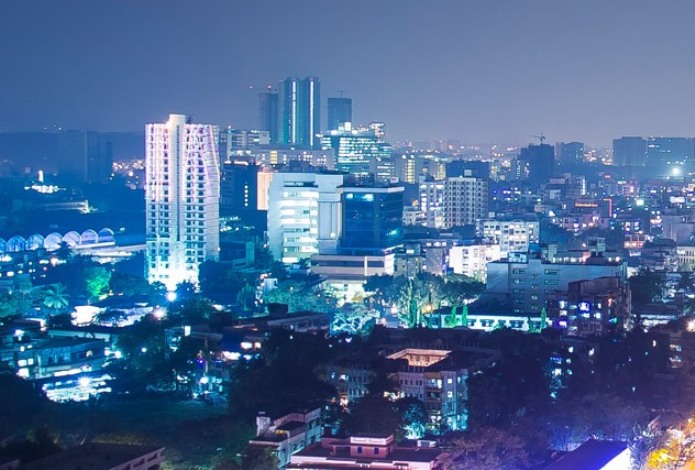Tata Power has been taking a series of measures to strengthen its distribution business in Mumbai, with a view to tackling the growing power demand, especially in the summer months, a top company official said.
Addressing a media briefing in Mumbai on March 29, 2023, Sanjay Banga, President – T&D, Tata Power, said that the utility was fully geared up to meet the summer peak demand this year, which is widely believed to touch unprecedented high levels.
Sanjay Banga explained that in the summer months this year, the peak demand in Mumbai (overall) is expected to be 4,000 MW which would be higher than its previously recorded peak of 3,851 MW. In the area served by Tata Power’s Mumbai distribution business (referred to as TPC-D), peak demand is expected to touch 1,000 MW, surpassing the previous high of 975 MW.
This load growth will be efficiently met through a significant revamp of the T&D infrastructure, which TPC-D has been regularly undertaking over the years. Besides, TPC-D has firm power purchase agreements for 1,400 MW of power that can easily meet the projected peak demand, Banga said.
Meanwhile, major investment has been planned in revamping the transmission backbone as well as the distribution network, including consumer metering, Banga noted.
Transmission backbone
Elaborating on the transmission business of Tata Power in Mumbai, Vishwas Shrikhande, Chief-Mumbai Transmission, Tata Power, said that in FY24, around Rs.700 crore worth of capital expenditure (capex) would be made in the Mumbai transmission business. For the past few years, Tata Power has been routinely undertaking capex of Rs.500 crore per year, to this effect.
During FY24, among other things, Tata Power plans to convert its 700-ckm network of 110kV lines into 220kV lines. Similarly, 220kV lines (measuring about 400 km) will be uprated to 400kV. This would be achieved by replacing existing conductors with high-capacity conductors, as well as modifying existing transmission towers to support more conductors. This upgrade will be undertaken without incurring any additional right-of-way (RoW) requirements.
Underground EHV network
A major project that Tata Power has planned is an underground 400kV transmission network using extra-high voltage (EHV) cables. This plan, as Shrikhande noted, was in its early days and approvals from Maharashtra Electricity Regulatory Commission (MERC) were being sought. My current thinking, this network spanning around 60 km would be equipped with three circuits. Though laying of EHV cables entails a longer gestation period, underground cables will offer superior reliability in the long run. Once this 400kV underground network is in place, Mumbai’s power transmission requirements for the next 30-35 years would be easily taken care of, Shrikhande said.
Distribution upgrade
TPC-D has been undertaking a number of technological innovations on the distribution infrastructure side, noted Dr Nilesh Kane, Head-Mumbai Distribution, Tata Power. In May this year, the utility is set to launch its very first underground substation. This 400kV facility is coming up at Parel in south-central Mumbai. TPC-D has also introduced a tower-mounted compact substation (CSS) that saves on the geographical footprint. Another upcoming innovation is “high-floor” substations with multi-floor mini feeder pillars and individual-floor metering, to be implemented in upcoming residential high-rises. For instance, in the under-construction residential tower “World One”, Tata Power will install a substation on the 44th floor. World One — a 442m tower with 117 floors — is a Lodha Group project coming up at Worli in south-central Mumbai.
Green measures
Among the various “green” measures that TPC-D was implementing in its distribution infrastructure revamp was moving away from the use of SF6 (sodium hexafluoride). SF6 —a greenhouse gas, 30,000 times more potent than carbon dioxide—is widely used in switchgear as an efficient insulating medium. Dr Nilesh Kane explained that SF6-free alternatives like vacuum circuit breakers (VCB) and solid-state insulating switchgear (SIS) would be considered even though they would be much costlier.
Also read: Tata Power DDL Gears Up To Meet Projected Record Summer Peak Demand
Smart metering
Tata Power has so far installed 1.25 lakh smart meters in the Mumbai distribution area and has plans to cover the entire customer base by 2025. When asked about whether Tata Power would like to introduce the prepaid metering culture, Sanjay Banga, President – T&D, Tata Power explained that the concept of prepaid meters has been introduced mainly to improve the financial health of power utilities. In the prepayment ecosystem, consumers pay the utility for electricity, before it is consumed. This automatically improves the financial health of distribution utilities as the contentious issue of recovery of electricity bills is forestalled by design.
TPC-D, on the other hand, predominantly has “paying” customers. The utility does not have to contend with unpaid bill recoveries and this is borne out in the fact that the aggregate technical & commercial losses (AT&C) losses of TPC-D are less than 2 per cent, which is perhaps the best in the country. This being the case, TPC-D will not push for prepaid metering but consumers will still have the option of prepaid meters. Incidentally, all TPC-D smart meters are equipped with a prepayment option that can be exercised by the consumer, Banga observed.
On the smart meter rollout, Dr Nilesh Kane said that TPC-D would be investing around Rs.500 crore over the next 2-3 years to equip its entire customer base of 7.68 lakh with smart meters, by 2025. This base comprises around 7 lakh residential and some 0.60 lakh of commercial & industrial customers, inclusive of “switchover” and “changeover” customers.

